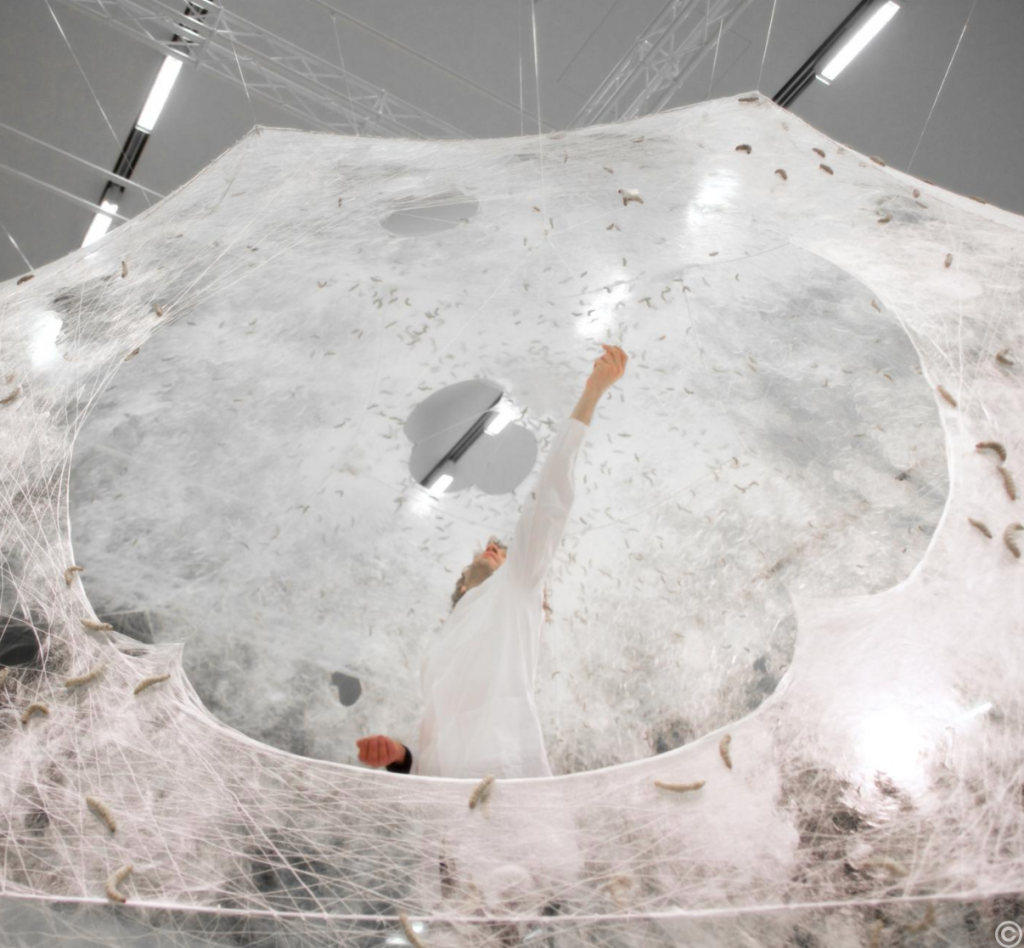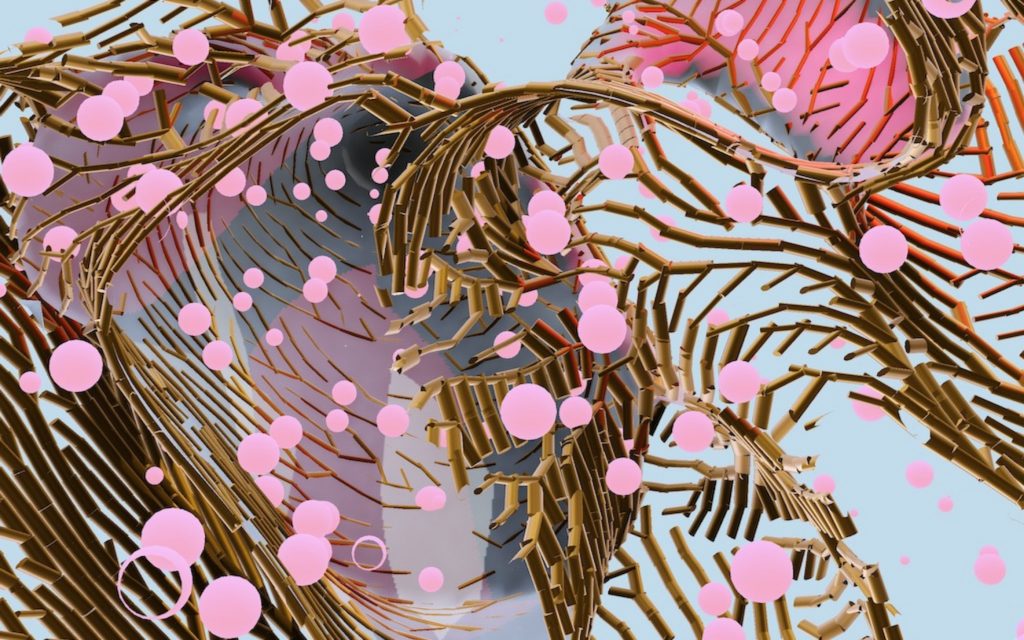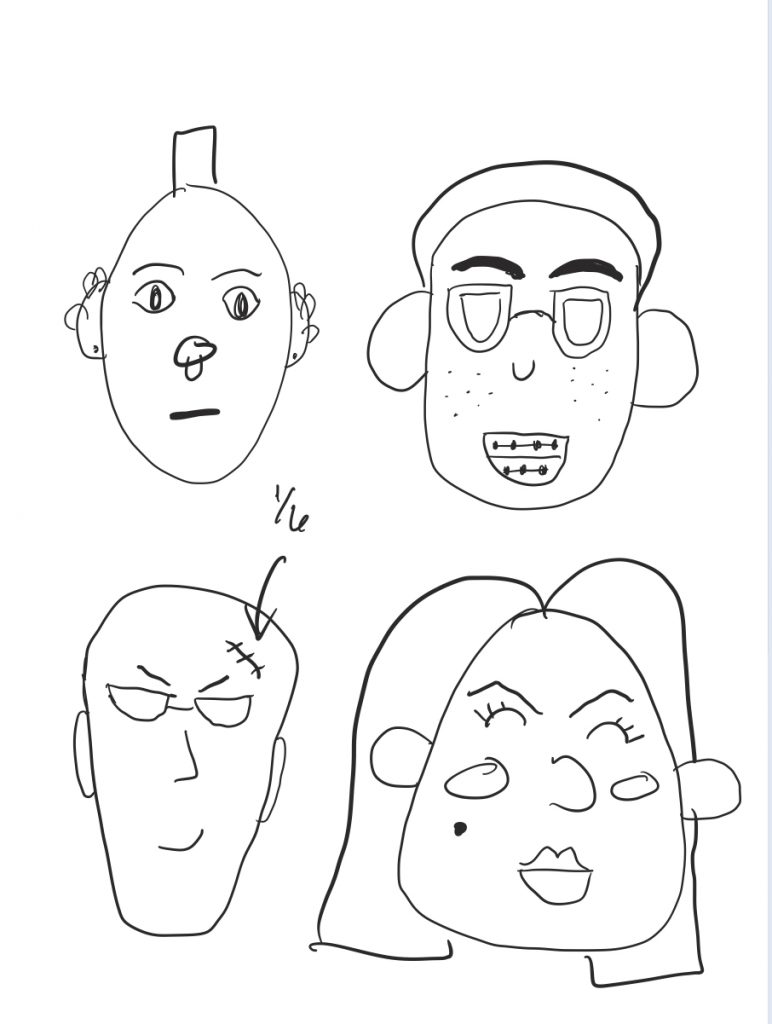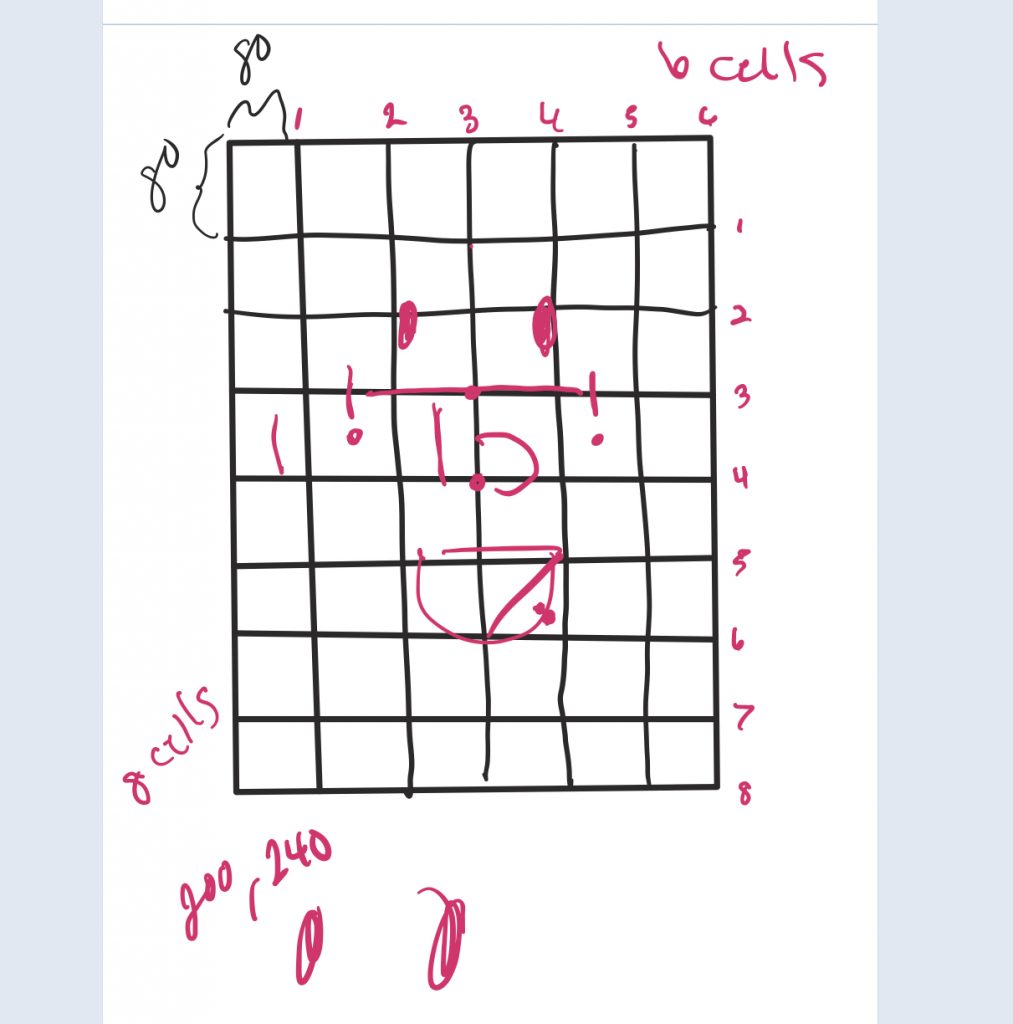max-self portrait
function setup() {
createCanvas(350,400);
background(220);
text("p5.js vers 0.9.0 test.", 10, 15);
}
function draw() {
strokeWeight(0); //background color
fill(199,216,199);
rect(0,0,350,450);
fill(243,185,143); //face shape
ellipse(175,225,180,220);
fill(243,185,143);
circle(175,150,180);
fill(46,38,34); //eyebrows
ellipse(130,140,50,15);
ellipse(108,147,15,20);
ellipse(220,140,50,15);
ellipse(240,147,15,20);
stroke(243,234,185);
strokeWeight(3);
fill(64,63,65); //glasses
circle(130,175,65);
fill(64,63,65);
circle(220,175,65);
stroke(243,234,185); //glasses bridge
strokeWeight(3);
point(165,175);
point(170,172.5);
point(175,172);
point(180,172.5);
point(185,175);
strokeWeight(0);
fill(243,185,143); //ears
ellipse(75,195,45,80);
fill(243,185,143);
ellipse(277,195,45,80);
fill(46,38,34);
rect(90,50,170,50); //hair
circle(100,80,50);
circle(100,95,40);
ellipse(85,135,20,50);
circle(90,100,30);
circle(85,102,20);
circle(135,95,50);
circle(100,75,60);
circle(120,70,60);
circle(150,60,70);
circle(160,55,50);
circle(175,60,70);
circle(180,70,70);
circle(190,60,60);
circle(200,75,50);
circle(210,70,60);
circle(215,80,50);
circle(225,70,60);
circle(240,70,50);
circle(225,52,50);
circle(245,70,45);
circle(245,65,50);
circle(250,75,40);
circle(250,85,30);
circle(255,90,40);
ellipse(265,120,20,50);
circle(265,140,20);
circle(265,145,15);
circle(265,155,10);
circle(265,120,30);
circle(85,160,10);
circle(85,120,30);
circle(85,135,23);
fill(46,38,34);
ellipse(85,200,8,100); //beard
ellipse(265,200,8,100);
circle(87,245,10);
circle(87,247,13);
circle(87,250,15);
circle(85,240,10);
circle(89,255,17);
circle(91,260,18);
circle(94,270,20);
circle(95,275,22);
circle(96,280,24);
circle(98,285,26);
circle(100,290,27);
circle(101,295,27);
circle(102,300,28);
circle(105,305,28);
circle(110,310,28);
circle(112,315,29);
circle(115,318,29);
circle(120,322,30);
circle(125,328,31);
circle(128,335,31);
circle(135,337,32);
circle(140,338,32);
circle(145,339,32);
circle(150,340,33);
circle(160,341,34);
circle(165,342,34);
circle(170,341,34);
circle(175,341,33);
circle(180,340,33);
circle(185,339,33);
circle(190,338,33);
circle(195,336,32);
circle(200,335,32);
circle(205,332,32);
circle(210,330,32);
circle(215,328,32);
circle(220,325,31);
circle(225,320,31);
circle(230,315,31);
circle(235,310,34);
circle(240,305,30);
circle(235,300,28);
circle(240,295,28);
circle(245,290,28);
circle(245,285,27);
circle(246,280,27);
circle(247,275,26);
circle(248,270,24);
circle(249,265,23);
circle(250,260,22);
circle(252,265,22);
circle(253,260,22);
circle(254,255,20);
circle(255,250,19);
circle(260,245,15);
circle(258,240,15);
circle(258,235,14);
circle(259,230,12);
circle(262,225,10);
ellipse(145,260,40,13); //mustache
ellipse(200,260,40,13);
circle(159,258,13);
circle(185,258,13);
ellipse(127,268,10,20);
ellipse(218,268,10,20);
ellipse(172,300,8,20);
circle(172,290,10);
}
For this project, I spent a lot of time using trial and error to figure out how I wanted to create the hair. Overall, I’m happy with how it turned out, and I went for a more simplistic look.
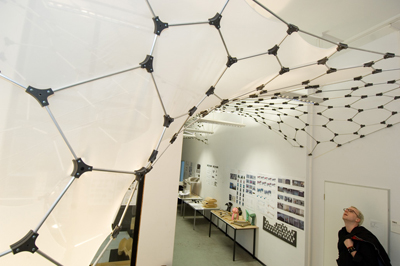
![[OLD SEMESTER] 15-104 • Introduction to Computing for Creative Practice](../../../../wp-content/uploads/2023/09/stop-banner.png)
